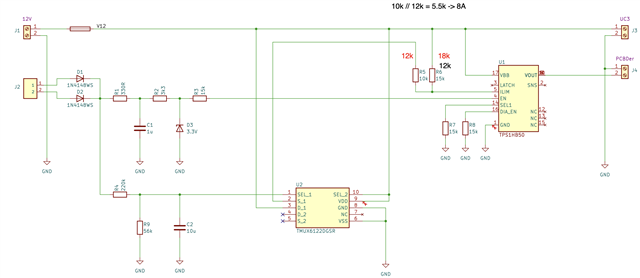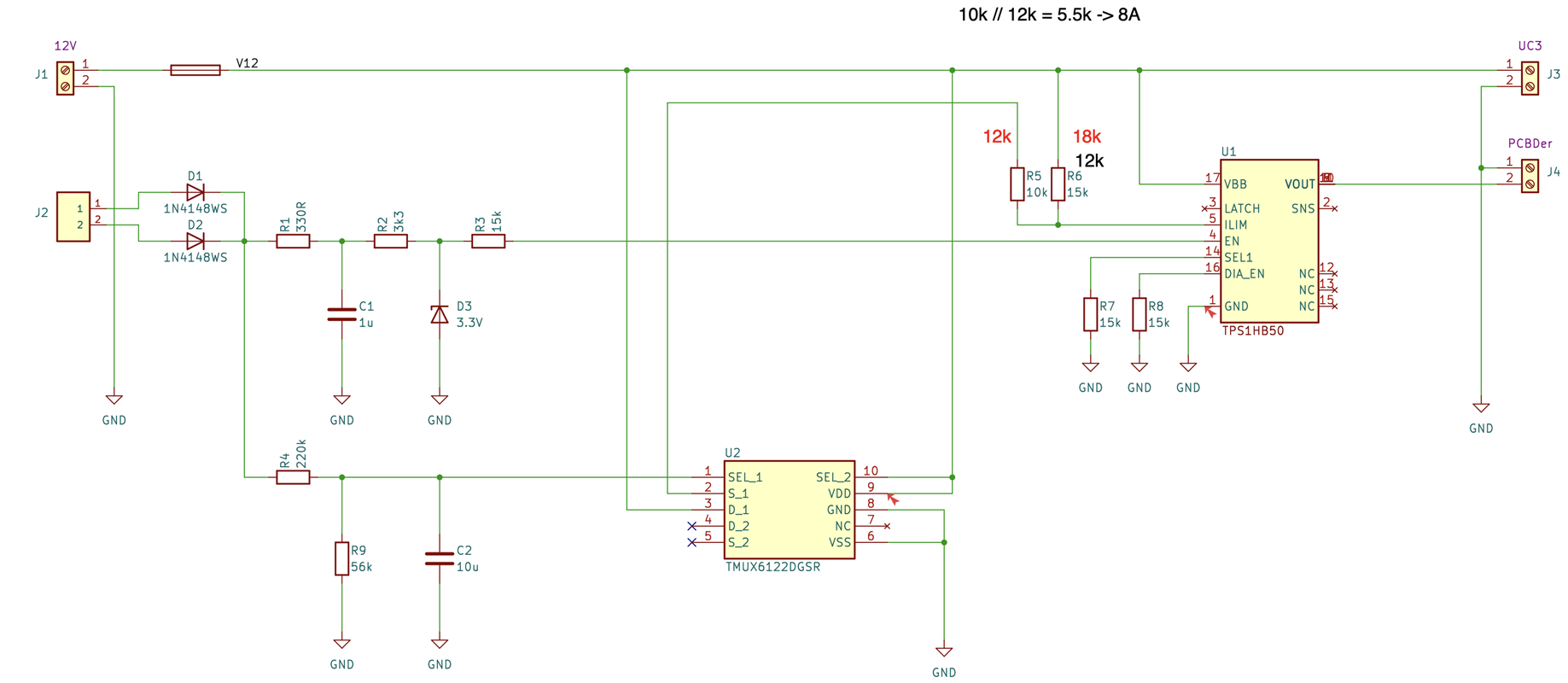Tool/software:
I need to limit the current of two actuators when they are stuck. Typically the nominal current is around 4A, and when the actuators are stuck this raises to 8A our even more. The difficulty is that at startup they will consume a peak current around 10A. So I came up with the following schematics (output to actuators on PCBDer):

Some explanations:
- the two input signals (12V on J2) enable the circuit and trigger a delay on the TMUX,
- initially the TMUX switch is closed hence current limit is provided by R5 in parallel with R6, 18k // 12k allows for a bit more than 12A
- after the delay of ~100ms the TMUX switch opens and current limitation is provided by R6 only, allowing for 5A.
This works quite fine, but it happens that the HB50 burns, and its output si shortcutted when the actuators are stuck. Apparently because the current is too high.
I don't understand why this happens since the circuit is supposed to be protected agains any possible overload or disfunction.
Any explanation or recommendation ?


